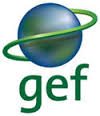Community / Land projects / Conservation and Sustainable Management of Land Resources and High Nature Value Ecosystems in the Aral Sea Bas
Conservation and Sustainable Management of Land Resources and High Nature Value Ecosystems in the Aral Sea Bas

€3950349.94
03/22 - 03/27
Active
This project is part of
Implementing Organisations
Donors
Data Providers
Objectives
To promote land degradation neutrality, restore and improve the use of land and water resources in Turkmenistan’s Amudarya watershed to enhance the sustainability and resilience of livelihoods and globally significant ecosystems.
Other
Note: Disbursement data provided is cumulative and covers disbursement made by the project Agency.
Target Groups
The envisaged benefits to local and national stakeholders will be interconnected with the aggregated environmental benefits enabled by the project’s features: (i) embedded integrated benefits and synergies across focal areas, (ii) mechanisms for integrated decision making and (iii) landscape-scale designed interventions. The project incentivizes local actors away from destructive behaviour through engaging them in biodiversity friendly livelihoods around protected areas. Adequate awareness, technical knowledge and access to funding are key to ensuring that stakeholders will be able to adopt innovative, environmental-friendly practices. The project therefore aims at increasing capacity of 100 public sector employees and 200 PAs staff who will be participating in training activities. Approximately 10,150 people stand to benefit directly from the project’s interventions. About 100 local farmers and pastoralists will benefit from the project’s Micro-scheme support for livelihoods ( under Output 2.3) and it is estimated that their income will register at least 20% increase as a result of the implemented SLM measures. This is a conservative percentage, as income generation from recommended SLM measures will likely provide more benefits: e.g. according to past donor-supported projects[1], application of rotational grazing alone can provide an estimated net profit of up to $16 per sheep ( after subtracting the costs per sheep of about $8). The repair of the irrigation network (Output 1.3) has proven economically profitable, for example: repair of dams and reservoirs will increase water availability and can support expansion of cultivation areas (that previously were not suitable); the Internal Rate of Return (IRR) is 227% and the payback period is 1 year; the repair and lining of water storage basin will reduce water losses and leads to increased water supply. The IRR is 15% and payback period is 8 years; construction of drip irrigation systems will increase with approximately 40-50% the fruit and vegetable yields and the IRR is 29% and payback period approximately 5 years. Approximately 9,750 farmers will benefit from the improved refurbishment of irrigation systems on demonstration plots, demonstrative drip irrigation systems, construction of water wells, rainwater harvesting facilities and pasture management regimes and restored degraded land. The generated experience is replicable first to approximately 100,000 people (employed in agriculture) in Dashoguz and Lebap priority districts first, then at the province level, particularly through: the project supported policy (i.e. National Action Plan to Combat Desertification), different Guidelines on LDN compatible land use, manuals, land use planning tools, demonstrated experiences at local level that work, and with the support of the awareness events and radio/TV talk shows. Improved livelihoods resilience is likely to result in reduced economic losses associated with water scarcity, and in greater agricultural productivity, increased revenues and employment prospects and diversification of income sources. The project’s gender-sensitive micro-grant scheme will prioritise mid and small farmers located in the selected areas (and identified LDN hot spots) including women, youth and vulnerable people thus prioritising support to the most vulnerable among the farming communities, affected by climate vulnerability but also from a social perspective. Greater resilience will result in reduction in economic losses associated with climate shocks. At national level, these losses are estimated at $ 2.5 billion per year by 2030. Cost benefit analysis will be undertaken for individual investments to be made on demonstration plots. Due to the awareness and education events and due to the National LDN Target and enabling policies the potential for scaling up sustainable land management measures and integrated LDN compliant land use planning will increase the replication potential. The mechanisms for integrated decision making that the project will promote under GEF/UNDP Projects Output 1.1 (regarding participative integrated land use planning and regional LDN target setting) and Output 2.1 ( regarding the Local Councils and consultative committees to provide for local consultations on the designation of new protected areas and improved protection regimes around KBAs/IBAs and sanctuaries) will provide opportunities to reduce conflicts among resource users or overlaps in institutional mandates. General agreements on potential trade-offs promoted through an integrated and participatory manner, provide the platform for improved environmental and socio-economic benefits. In addition to agricultural activities, as it has been demonstrated by many other projects, during participatory mechanisms, farmers use these opportunities to talk about water, climate, sanitation and social issues and by so doing they are able to engage local authorities as partners in different other proposals for rural development. Finally, the project’s focus at landscape-level in the Amudarya Basin landscape and on the implementation of multiple interventions within a spatial unit, allows for generating more synergistic benefits. Healthy ecosystems will ensure resilience of the region to climate and human threats, and the maintenance of ecosystem services for local communities. [1] Examples recorded in UNCCD/WOCAT database




